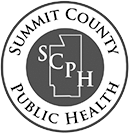Food Safety Resources
SCPH Handouts & Resources
|
|
English |
Spanish |
Chinese |
Nepali |
|
Employee Health Policy Agreement |
||||
|
Vomit & Diarrhea Clean-Up |
||||
|
Handwashing Instructions |
||||
|
Basic Safe Food Handling Practices |
||||
|
Time as a Public Health Control Procedures |
||||
|
Date Marking |
||||
|
Wiping Cloths |
||||
|
Sanitizer Use Instructions |
||||
|
Cooling Procedures |
||||
|
Proper Thawing Techniques |
||||
|
Thermometer Use and Calibration |
||||
|
Proper Use of Disposable Gloves |
||||
|
Food Storage |
||||
|
Food Allergens |
||||
|
Safe Handling of Fruits and Vegetables |
||||
|
Food Safety Overview |
||||
|
Time & Temperature Control |
||||
|
Cleaning & Sanitizing |
||||
|
Air Gap vs Air Break |
||||
|
Foodborne Pathogens |
Fats, Oils & Grease (FOG) Program
Ohio Department of Health (ODH) Resources
- First Aid for Food Choking
- First Aid for Food Choking - Spanish
- First Aid for Food Choking - Mandarin
USDA Food Safety Fact Sheets
U.S. Food & Drug Administration Resources
- USFDA Food Information
- USFDA Food Facts for Consumers
- USFDA Recent Recalls of Foods & Dietary Supplements
Posters, Brochures & Signs
- Chill Facts
- Cold Storage Chart
- Fight BAC™ - Four Simple Steps to Food Safety Brochure (English)
- First Aid for Choking
- Food Employee Handwashing Sign
- How to Safely Process Wild Game
- Temperature Danger Zone Poster
- Thermy™ Says: "It's Safe to Bite When the Temperature Is Right" Brochure (English)
- Use Chemicals Safely
Other Information & Guidelines
- Food Safety Tool to Assess Business and Food Safety Culture - CDC
- Food Safety Ninja - Educational Resources, Videos & Quizzes
- Food Code Reference Guides (available in English, Spanish & Mandarin)
- Information for Farmers Markets
- Link to information on Safe Home Produce Canning
- Reducing Risks for Expectant Mothers
People at Risk - Pregnant Women and Newborns-CDC
Go 40 or Below - FightBac.org
Protect Your Baby and Yourself from Listeriosis - USDA
People at Risk - Pregnant Women - FoodSafety.gov
Food Safety for Pregnant Women - FDA - Hepatitis A Information for Food Establishments
- Hepatitis A Information for Food Workers
- Keeping Children Safe from Food-borne Illness
- CDC - Food and Water Safety Before and After Disaster
- Sharps Injuries and Restaurant Workers
- Consumer Advisory Requirements
- Food Safety News
Agency Links
- Centers for Disease Control and Prevention
- Ohio Department of Agriculture
- Ohio Department of Health
- Ohio EPA- Ohio Sport Fish Consumption Advisory
- US Department of Agriculture
- US Environmental Protection Agency
- US Food and Drug Administration
page updated 11-7-2024
